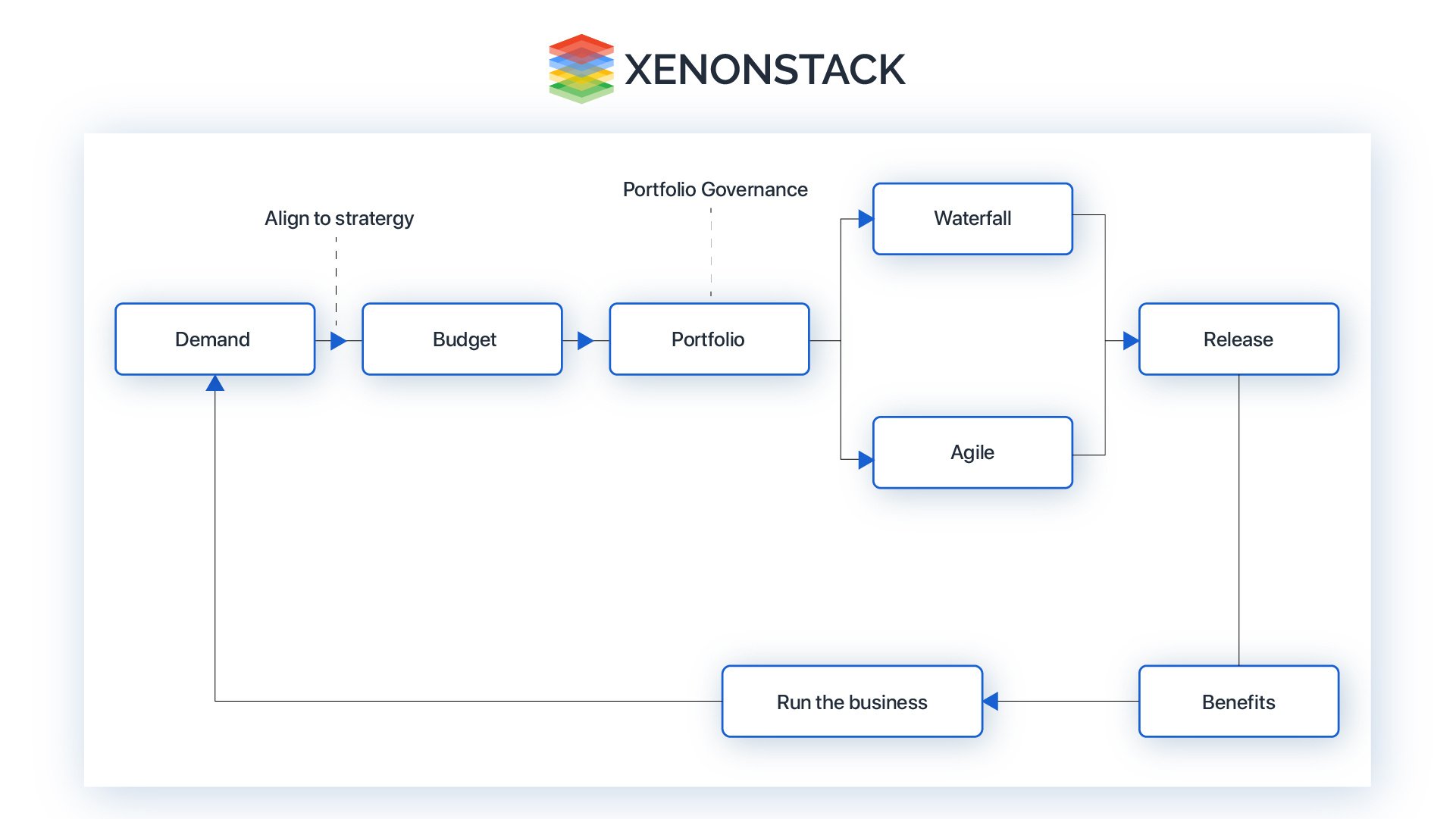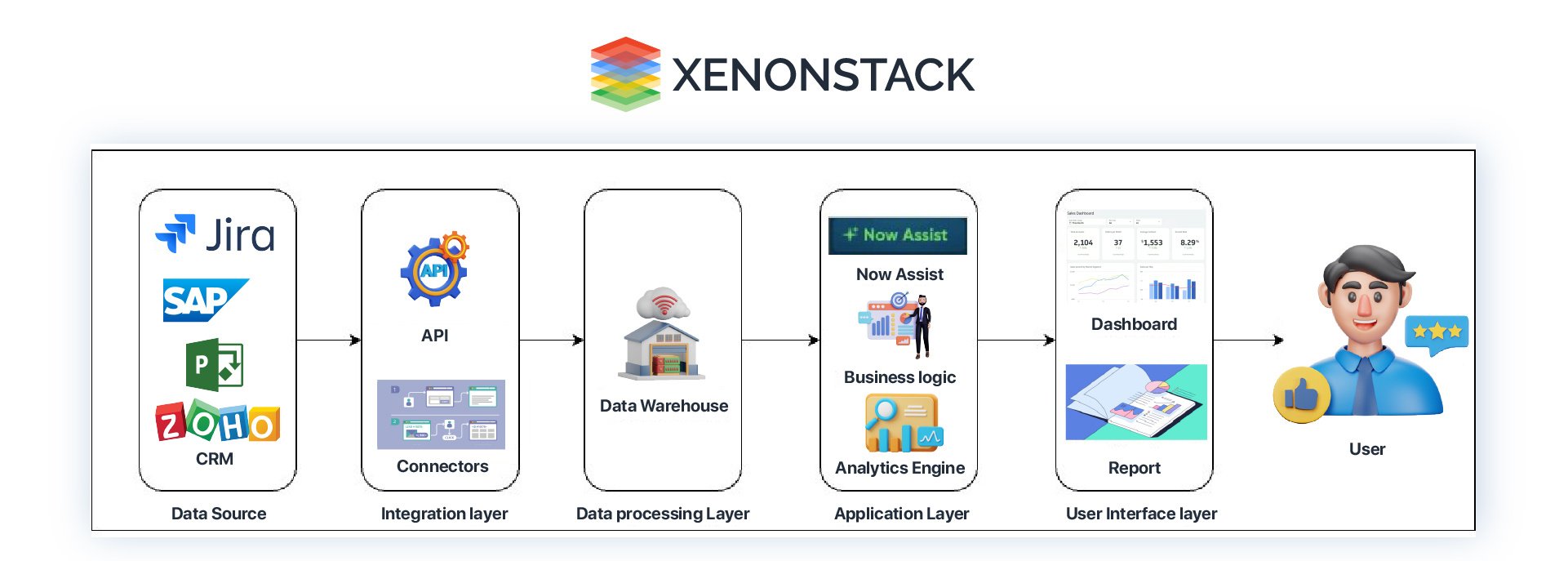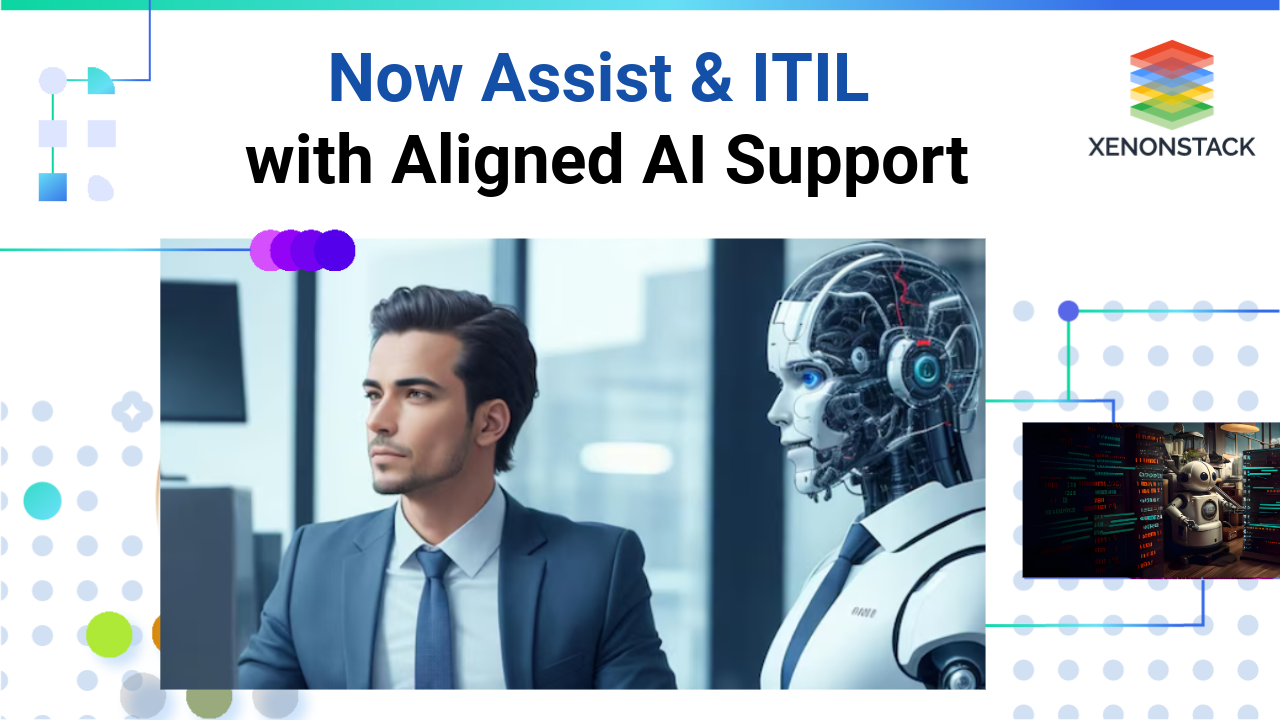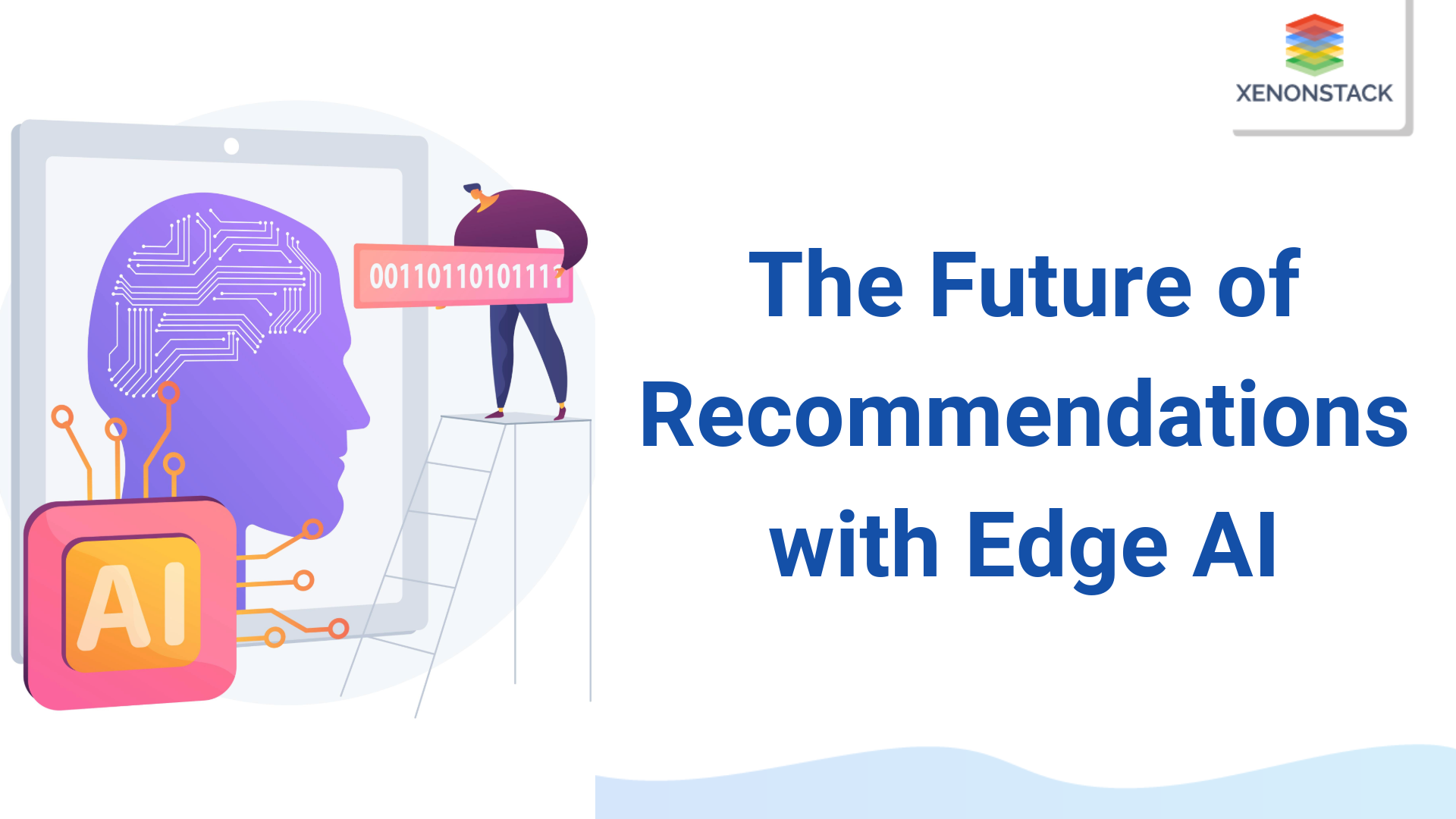Introduction to Strategic Portfolio Management with ServiceNow AI Agents
A fast-paced business environment presents organizations with unique opportunities and challenges. Making strategic investment choices is crucial to empower your business, especially in the area of digital transformation.Technology is not merely a tool; it is a dynamic enabler of business outcomes, enhancing an organization’s competitiveness, efficiency, agility, and innovation.
To fully leverage the power of technology, it is essential to bridge the gap between strategy and execution. This ensures that every effort is aligned with creating value for both internal and external customers. Achieving this alignment starts with seamless communication channels that allow demands and feedback to flow effortlessly from business stakeholders to the technology team. Unfortunately, the current reality is often far from ideal. Technology teams are frequently bogged down, sifting through vast amounts of unclear, unprioritized product feedback. Pressed for time, they often resort to addressing the latest feedback rather than identifying and prioritizing the valuable insights that could drive impactful initiatives.
Similarly, business stakeholders grapple with cumbersome demand-intake processes, stifling the free flow of needs and leading to missed innovation opportunities. This is where it transforms with groundbreaking innovation. By seamlessly integrating generative AI skills into SPM, This is redefining efficiency and productivity in the business landscape.
As per Gartner, "By 2025, 70% of digital investments will fail to deliver the expected business outcomes without a strategic portfolio management approach."
What is Strategic Portfolio Management with ServiceNow Autonomous Agents?
SPM is a comprehensive approach to enterprise IT planning and management that integrates various disciplines into a cohesive framework. It encompasses aligning business and technology planning, optimizing IT investments, and executing strategies effectively. SPM enables organizations to continuously adapt to digitalization and market changes by integrating business strategy with IT initiatives, fostering agility in resource allocation and roadmap adjustments.
Key elements include business strategy development, agile transformation, IT portfolio management, enterprise architecture governance, finance management, and security and risk management, supported by road mapping, analytics, and collaborative reporting. 
Fig1.1 Strategic Portfolio Management flow
It is pivotal for organizational success when it adheres to the "three Cs": contextual, continual, and collaborative.
- Contextual: SPM ensures that IT planning is intricately linked to business goals. In the era of digitalization, IT has become synonymous with business operations.
- Continual: SPM is not a static initiative but an ongoing process. It acknowledges the perpetual evolution of the business landscape and mandates continuous adaptation. This involves constant analysis, decision-making, road mapping, planning, execution, monitoring, and iterative refinement.
- Collaborative: Effective SPM relies on collaborative efforts and comprehensive data insights. It integrates diverse perspectives from stakeholders across the organization, leveraging robust data to inform strategic decisions.
Optimizing Strategic Portfolio Management using ServiceNow Agentic AI
What is Now Assist
It is a comprehensive tool designed to empower organizations in managing their strategic portfolios. It enhances by incorporating generative AI skills. It automates the creation of concise feedback summaries, saving significant time previously spent on manual analysis. Additionally, It utilizes generative AI and Virtual Agent capabilities to streamline demand request creation and editing, enabling requesters to swiftly submit and prioritize core tasks.
By integrating seamlessly with existing systems and processes, It provides a unified platform for overseeing projects, tracking progress, and making informed decisions. Its advanced features and user-friendly interface make it an indispensable asset for businesses aiming to stay ahead in a competitive market.
The Now Assist for SPM application incorporates Generative AI functionalities designed for product managers, facilitating the creation of feedback summaries and insights. This capability allows managers to gain a comprehensive understanding of feedback context. To generate an effective summary, It needs feedback entries to contain at least 60 words in the specified input fields. This minimum ensures that there is adequate information available to create meaningful summaries, thereby enhancing the overall user experience.
Strategic Portfolio Mangement
The solution architecture for Now Assist integrates various components to provide a seamless and efficient system. The architecture consists of multiple layers: data sources, integration, data processing, application, and user interface. Data sources include project management tools (e.g., Jira, Trello, Microsoft Project), financial systems (e.g., SAP, Oracle Financials, QuickBooks), ERP systems (e.g., SAP, Oracle ERP, Microsoft Dynamics), and other sources such as HR and CRM systems. The integration layer uses APIs, ETL processes, and data connectors to consolidate data from these sources.

Fig1.2. Flow of strategic portfolio management with Now Assist
The data processing layer includes a data warehouse for structured data, a data lake for raw data, and data transformation processes to ensure consistency and accuracy. The application layer is built on the Now Assist platform, which provides core SPM functionalities, an analytics engine for advanced analytics and predictive modeling, and business logic to enforce organizational policies. The user interface layer offers interactive dashboards, customizable reports, mobile apps, and a web interface for real-time monitoring and management.
Key implementation considerations include scalability, security, performance, flexibility, and usability. This architecture ensures that organizations can leverage for effective, aligning projects with strategic goals, optimizing resource utilization, and improving project outcomes. For example, a company using Jira for project management and SAP for financials can integrate these systems through APIs, consolidate data in a data warehouse, and use the platform to analyze project performance, optimize resource allocation, and ensure alignment with strategic goals, ultimately achieving better project outcomes.
Architecture Components
Data Sources
-
Project Management Tools: Provide project-related data such as timelines, milestones, resource assignments, and task statuses (e.g., Jira, Trello, Microsoft Project).
-
Financial Systems: Supply financial data including budgets, actual expenditures, forecasts, and financial performance metrics (e.g., SAP, Oracle Financials, QuickBooks).
-
ERP Systems: Contribute enterprise-level data on resources, inventory, supply chain, and other critical business operations (e.g., SAP, Oracle ERP, Microsoft Dynamics).
-
Other Sources: Include HR data for resource skills and availability, CRM data for customer-related projects, and custom databases for specialized information (e.g., HR systems, CRM systems, Custom databases).
Integration Layer
-
APIs: Facilitate communication between Now Assist and various external systems, ensuring seamless data exchange.
-
ETL Processes: Automate the extraction, transformation, and loading of data from disparate sources into a unified format for analysis.
-
Data Connectors: Provide out-of-the-box connectivity to common systems, reducing the time and effort required for integration (e.g., Jira, SAP).
Data Processing Layer
-
Data Warehouse: Centralized storage for processed and structured data, optimized for fast querying and analysis.
-
Data Lake: Repository for raw, unstructured data, enabling advanced analytics and machine learning applications.
-
Data Transformation: Processes to clean, normalize, and structure data, ensuring consistency and accuracy for analysis.
Application Layer
-
Now Assist Platform: Core SPM functionalities including portfolio analysis, resource management, financial tracking, risk management, and performance measurement.
-
Analytics Engine: Provides capabilities for advanced analytics, including predictive modeling, scenario planning, and KPI tracking.
-
Business Logic: Custom rules and logic to enforce organizational policies, ensuring alignment with strategic goals.
User Interface Layer
-
Dashboards: Real-time, interactive visualizations for monitoring key metrics and overall portfolio performance.
-
Reports: Detailed, customizable reports for in-depth analysis and decision-making support.
-
Mobile Apps: Enable access to portfolio information and management capabilities on mobile devices.
-
Web Interface: Intuitive and user-friendly web interface for performing all SPM activities.
By implementing this solution architecture, organizations can effectively leverage for achieving better alignment with strategic goals, optimized resource utilization, and improved project outcomes.







